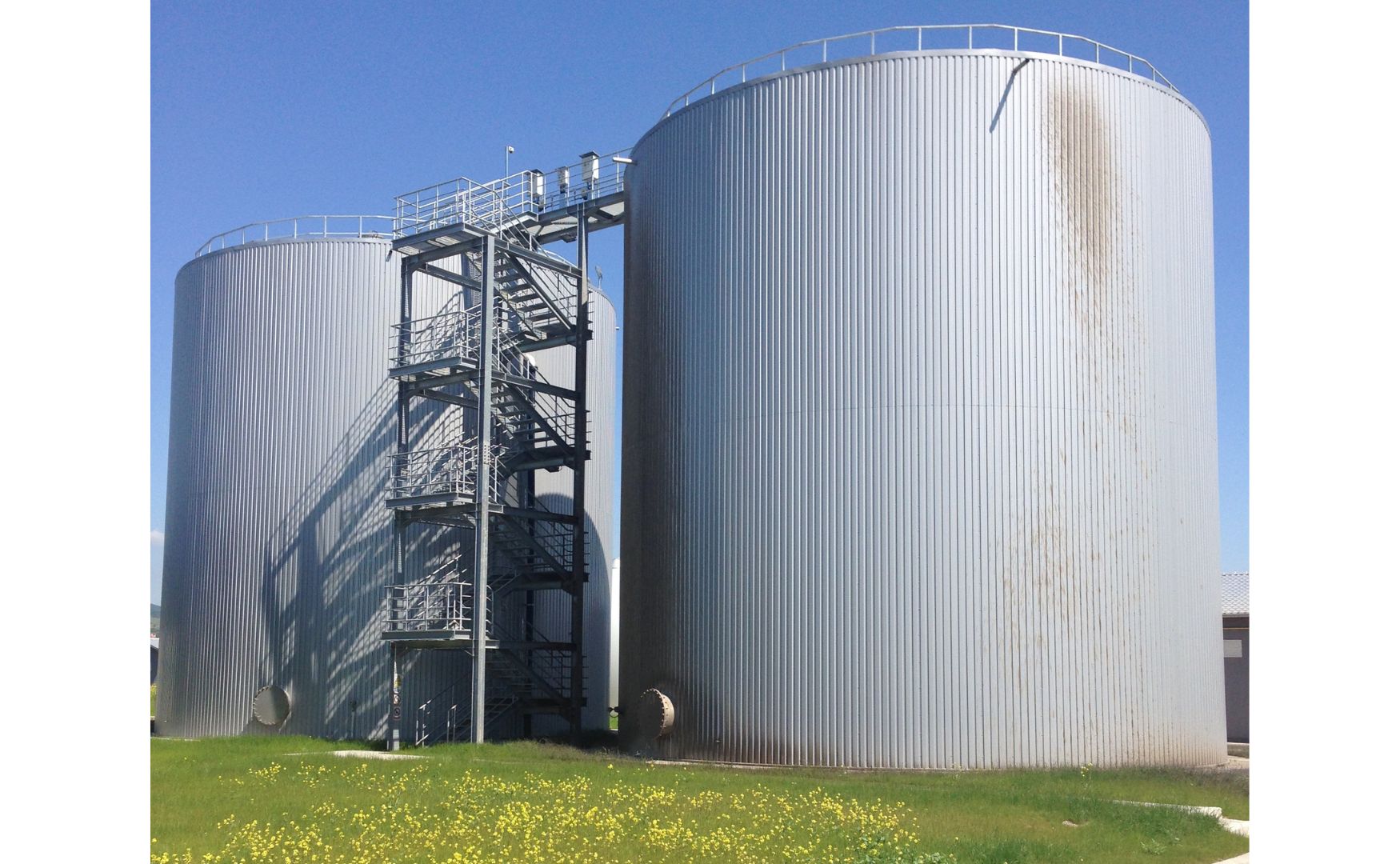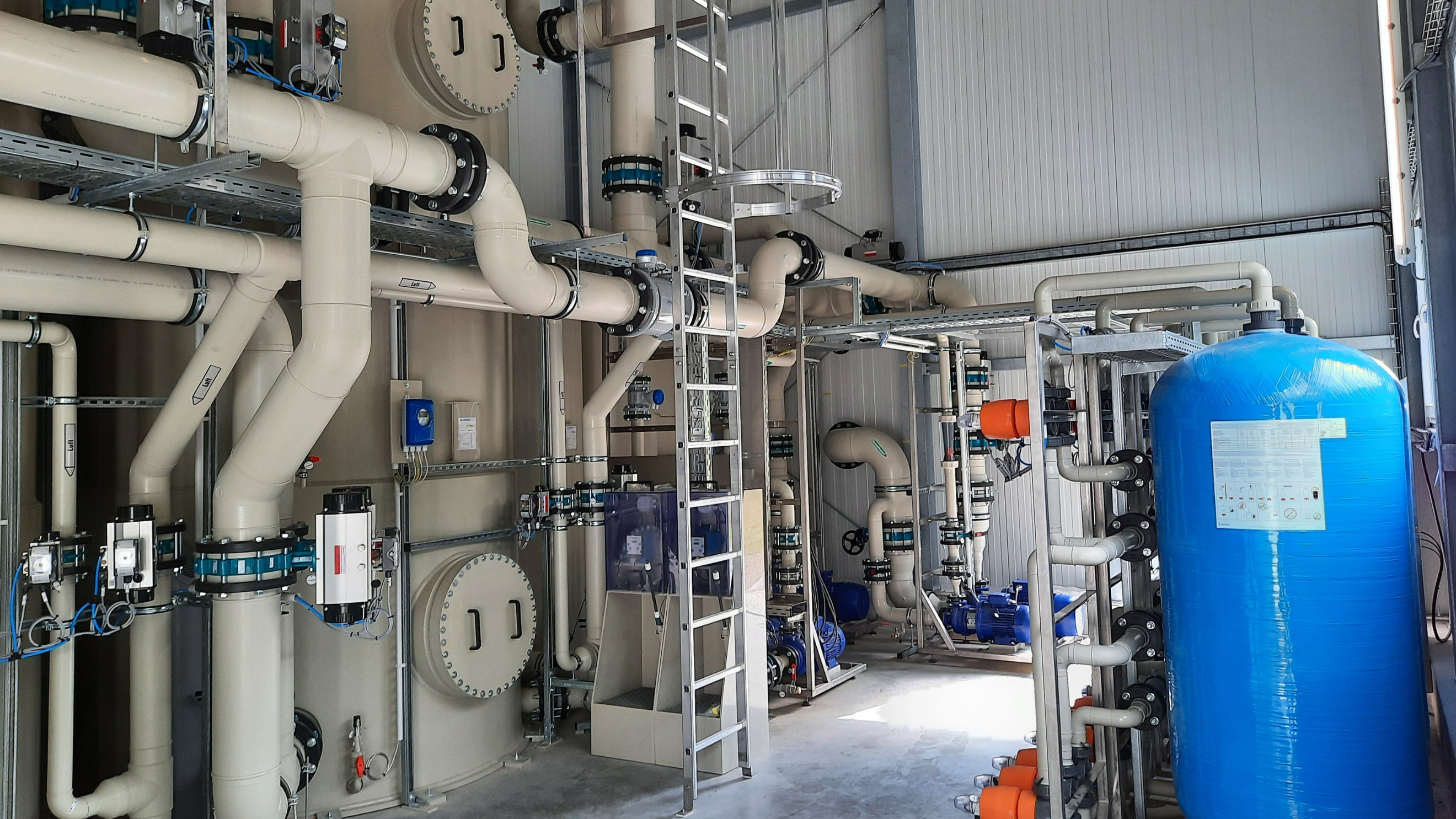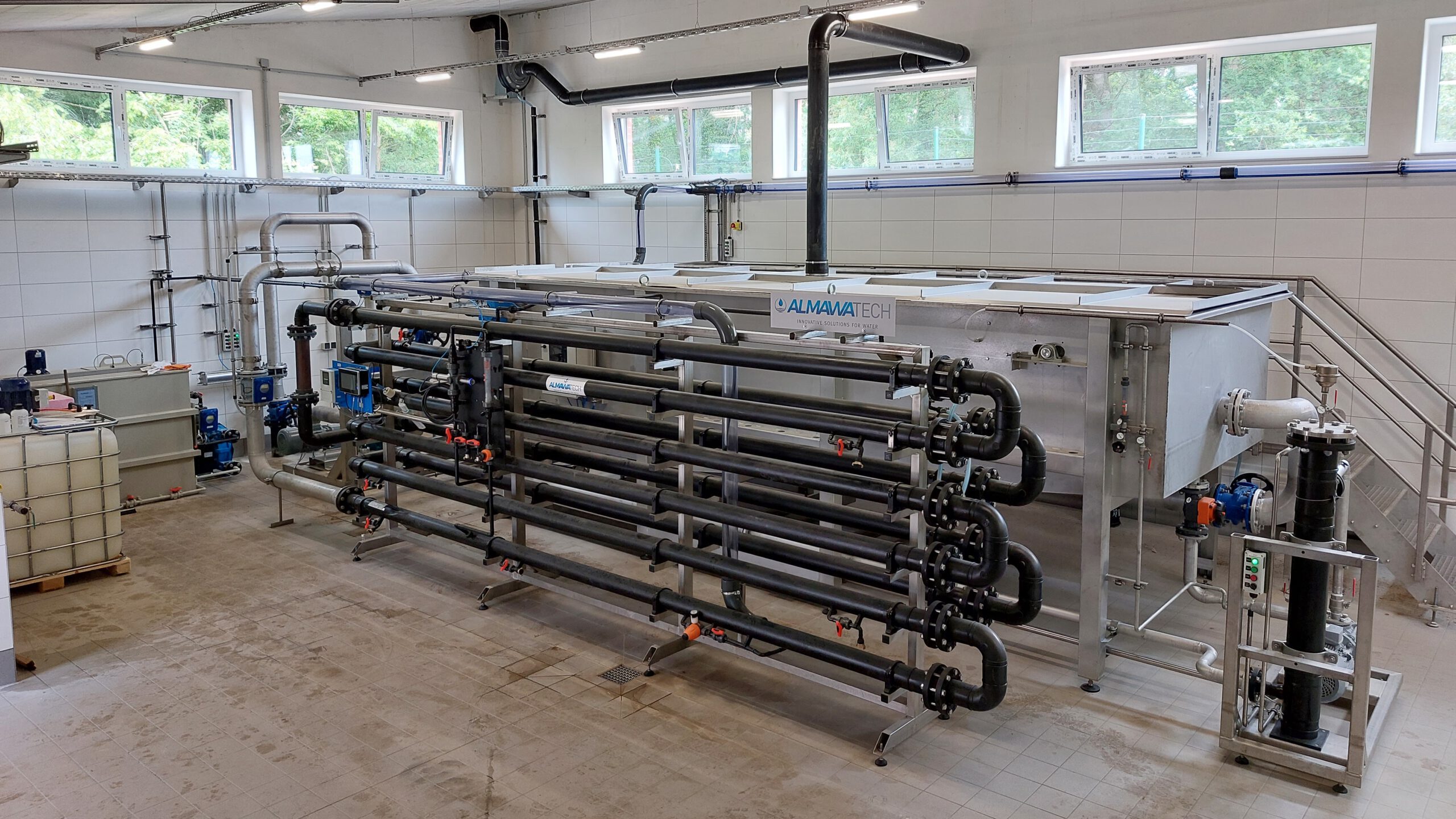Sweet whey is a by-product of cheese production that is produced during the rennet coagulation of milk. In contrast to acid whey, sweet whey has a higher pH value (6.0-7.0) and a different chemical composition, which makes it a versatile but challenging material stream in industrial wastewater treatment. Due to its high organic content and valuable components such as lactose and proteins, sweet whey offers both potential environmental risks and opportunities for sustainable utilization.
In this article, the chemical properties of sweet whey, the challenges in wastewater treatment and modern technologies for utilization and treatment are presented in detail. A special focus is placed on biological processes, flotation plants and water recycling technologies.
Table of contents
Properties of sweet whey
Sweet whey has a complex composition that influences its treatment and utilization in industrial practice.
Chemical and physical parameters:
Organic substances:
- Lactose: The main component of sweet whey, around 4-5%, makes it an easily biodegradable substance.
- Whey proteins: globulins and albumins, which are valuable nutrients but can lead to sludge formation in wastewater treatment.
- Lipids: Small amounts of fats that can lead to biofouling.
Minerals:
- Contains calcium, magnesium, phosphorus as well as potassium and sodium salts. These salts influence conductivity and chemical treatment.
pH value:
- Neutral to slightly alkaline (6.0-7.0). This facilitates biological processes, but reduces the efficiency of chemical precipitation.
COD (chemical oxygen demand):
- Typically 40,000-60,000 mg/l, which indicates a high organic load.
BOD (biological oxygen demand):
- Mostly 30,000-50,000 mg/l, which indicates high biodegradability.
Challenges in the treatment of sweet whey
The treatment of sweet whey poses specific challenges due to the organic load and its fluctuating composition.
High organic load:
- The high COD and BOD values lead to an intensive load on biological wastewater treatment plants.
- Increased sludge formation is often a problem, especially in aerobic systems.
Nutrient availability:
- Although sweet whey is rich in carbon, nitrogen and phosphorus are present in quantities that support balanced microbial growth.
Fat and protein content:
- These components can lead to blockages, biofouling and increased cleaning effort.
Volatility:
- Fluctuating wastewater volumes and compositions, e.g. due to cleaning cycles, make process control more difficult.
Disposal costs:
- The direct disposal of untreated sweet whey is prohibited and expensive due to the environmental impact.
Treatment of sweet whey wastewater
Biological wastewater treatment is a proven method for breaking down organic compounds from sweet whey wastewater. Aerobic and anaerobic processes are used here, which are selected depending on the wastewater load and process objective.
1. aerobic treatment
Process description:
In aerobic degradation, microorganisms use oxygen to oxidize the organic components of the whey and convert them into CO₂, water and biomass. These processes are particularly efficient with vapor condensates and diluted wastewater.
Technologies:
Activated sludge process:
Microorganisms break down the organic substances in aerated reactors.- Suitable for wastewater with a low to medium COD load.
- High energy requirement due to ventilation.
Sequencing Batch Reactor (SBR):
Time-controlled processes in a reactor that allows both aerobic and anoxic phases.
Advantages of aerobic treatment:
- Rapid degradation rates for easily degradable organic substances.
- Produces stable wastewater with low residual load.
Disadvantages:
- High energy consumption due to ventilation.
- Increased sludge formation, which requires post-treatment.

Photo: Aeration tank with denitrification and nitrification for wastewater from the food industry (process: ALMA BHU BIO)
2. anaerobic treatment
Process description:
During anaerobic decomposition, microorganisms break down organic substances in an oxygen-free environment. The end products are methane (CH₄) and carbon dioxide (CO₂), which can be utilized as biogas. This process is ideal for highly contaminated wastewater such as sweet whey.
Technologies:
1st UASB reactor (Upflow Anaerobic Sludge Blanket)
- How it works:
The wastewater flows from below through a granulated biomass layer. Organic matter is broken down and the resulting biogas rises to the top. - Advantages:
- Compact design.
- High efficiency for wastewater with medium to high loads.
2nd EGSB reactor (Expanded Granular Sludge Bed)
- How it works:
Similar to the UASB reactor, but with improved hydraulic mixing and a higher flow capacity. - Advantages:
- Suitable for heavily contaminated waste water.
- Higher biogas yield due to more intensive contact times.
Biogas yield
The biogas yield is a decisive factor for the economic efficiency of anaerobic wastewater treatment. It depends on the composition of the wastewater and the process conditions.
Factors that influence the biogas yield:
Organic load (COD):
- A high COD value correlates with a higher biogas yield.
- Typical: 1 kg of degraded COD produces 0.35-0.50 m³ of biogas.
Waste water type:
- Wastewater rich in fat, protein and carbohydrates: High biogas yield, as these substances are energy-rich.
- Poorly degradable substances: Lower biogas yield, as more energy is required for degradation.
Process temperature:
- Mesophilic conditions (30-40 °C): Common and economical.
- Thermophilic conditions (50-60 °C): Higher degradation rates, but higher energy costs.
pH value:
- Optimal range: 6.5-7.5.
- Deviations lead to inhibition of methanogenesis.
Dwell time:
- A sufficient hydraulic retention time (10-30 days) is necessary to complete the decomposition process.
Typical biogas yield:
- Whey wastewater: 0.4-0.6 m³ biogas per kg COD.
- Wastewater from the food industry: 0.3-0.5 m³ biogas per kg COD.
Advantages of anaerobic treatment
Energy generation:
The biogas produced during methanogenesis can be used to generate energy, which reduces the operating costs of the plant.High degradation efficiency:
Degradation of 70-90 % of the organic load (measured as chemical oxygen demand, COD).Low sludge formation:
Compared to aerobic processes, only around 10-20% of the biomass is formed, which reduces disposal costs.Sustainability:
The biogas yield replaces fossil fuels and reduces greenhouse gas emissions.

Photo: Our ALMA BHU GMR biogas plant for the fermentation of waste water from milk processing plants
Water recycling by means of biofiltration
Biofiltration as post-treatment:
After biological pre-treatment, the remaining residues and nutrients can be removed in a biofiltration plant removed in a biofiltration plant. This method is particularly effective for vapor condensates or pre-treated whey wastewater.
Process steps:
Wastewater discharge:
The pre-treated wastewater (e.g. from a flotation or anaerobic plant) is passed through a filter bed of prepared clay materials.Biofilm activity:
- The microorganisms on the filter material decompose organic substances and nutrients.
- In addition to reducing the chemical oxygen demand (COD) and biological oxygen demand (BOD), interfering compounds such as fats, oils and carbohydrates are also broken down.
- Also possible with nitrification and denitrification.
Particle filtration:
In addition to its biological activity, biofiltration also serves as a physical filter system that removes suspended solids from the wastewater.Water quality at the outlet:
The filtrate has significantly lower COD and BOD values as well as reduced concentrations of phosphorus and nitrogen.
Integration of biofiltration into the water recycling process
Biofiltration is often an intermediate step in a multi-stage water treatment plant. It prepares the wastewater for further processes such as reverse osmosis (RO), which enables further purification and desalination.
1. pretreatment before biofiltration
The wastewater must be pre-treated before biofiltration in order not to overload the filter system. Typical processes are
- Flotation: Removal of fats and solids.
- Anaerobic treatment: reduction of organic loads and biogas production.
- Aerobic treatment: Reduction of the organic load.
2. post-treatment with reverse osmosis
After biofiltration, the wastewater can be further purified by a reverse osmosis system in order to:
- Remove dissolved salts and minerals.
- Filter out residual organic substances and micropollutants.
- To reduce the conductivity of the water to a level that allows it to be reused.
Typical quality improvements through the combination:
- CSB: < 10 mg/l nach der Umkehrosmose.
- Conductivity: 10 - 200 µS/cm, depending on the application.
- Bacteria and viruses: Completely retained by the membranes.
Advantages of water recycling with biofiltration and reverse osmosis
1. sustainability:
- Reduction of fresh water consumption and conservation of natural resources.
- Minimization of wastewater volumes and discharge into public sewers or surface waters.
2. improvement of the water quality:
- Biofiltration effectively removes unwanted organic substances, minimizing fouling and biofouling in reverse osmosis.
- Reverse osmosis ensures almost complete removal of salts, nutrients and micropollutants.
3. economic efficiency:
- Reduction of operating costs through water reuse.
- Reduction in costs for wastewater disposal and fresh water treatment.
4. adaptability:
- The combination of biofiltration and reverse osmosis has a modular design and can be adapted to different wastewater compositions.

Photo: Our ALMA BioFil Compact biofiltration system for the treatment of vapor condensates and pre-treated wastewater from the food industry
Pre-treatment of sweet whey wastewater using flotation systems
Flotation is a proven technology for the pre-treatment of heavily contaminated wastewater, such as occurs in milk processing and the treatment of sweet whey wastewater. The targeted dosing of precipitants and flocculants removes dissolved and colloidal organic substances, fats and solids from the wastewater. This pre-treatment significantly reduces the organic and inorganic load and optimally prepares the wastewater for downstream biological or physico-chemical processes such as biofiltration.
How flotation works
Flotation is based on the principle that particles are carried to the surface of the water by the accumulation of gas bubbles (usually air). The particles form a foam that is skimmed off the surface of the reactor. Chemical pre-treatment with precipitants and flocculants is crucial for the efficient separation of substances.
Process steps in flotation treatment
1. chemical pre-treatment
Pre-treatment is carried out by adding precipitants and flocculants that are specifically adapted to the composition of the acid whey wastewater.
Precipitant:
- Objective: Conversion of dissolved substances into poorly soluble compounds that are easier to separate.
- Typical precipitants: aluminum sulfate, iron chloride or polyaluminum chloride.
- Reaction: Precipitants react with dissolved organic and inorganic substances, e.g. phosphates, and form flocs.
Flocculant:
- Goal: Enlargement and stabilization of the resulting flakes.
- Typical flocculants: High-molecular polymers (anionic, cationic or non-ionic).
- Effect: The polymer chains cross-link smaller particles and flakes to form larger, sedimentable or floatable flakes.
2. contact zone and gas injection
In the contact zone of the flotation system, the chemically pre-treated wastewater is mixed with very fine air bubbles. This is typically achieved by
Dissolved air flotation:
Water is saturated with air under pressure. When the pressure drops, very fine air bubbles (microbubbles) form and attach themselves to the flocs.Air injectors or diffusers:
Direct introduction of air or other gases into the flotation zone.
The resulting flakes with air bubbles have a lower density than water and rise to the surface.
3. skimming off the sludge layer
The substances accumulated on the surface form a sludge layer that is skimmed off continuously or discontinuously. The skimmed sludge is highly concentrated and can be further dewatered or treated in an anaerobic digester.
4. clear water outlet
The remaining clear water is discharged from the lower zone of the flotation plant and can be further treated biologically or, depending on its quality, used for the internal water recycling process.
Advantages of flotation pre-treatment
Flotation with chemical pre-treatment offers several advantages:
Efficient removal of fats, oils and solids:
Flotation ensures a significant reduction in COD and BOD values, particularly with whey wastewater, which contains high levels of fats and proteins.Reduction of organic load:
The precipitation of lactose and proteins relieves the downstream biodegradation process.Flexibility:
The dosing of precipitants and flocculants can be adapted to different loads and wastewater.Compact design:
flotation systems require little space and can be integrated into existing processes.

Photo: Our ALMA NeoDAF flotation system with load-proportional dosing of precipitants and flocculants and patented air saturation system
Challenges and solutions
1. high COD and BOD value:
Acid whey wastewater requires high-performance biological processes due to its high organic content.
- Solution: Combination of anaerobic pre-treatment and aerobic post-treatment for complete mineralization.
2. fluctuating wastewater load:
The composition of acid whey wastewater varies depending on production and cleaning processes.
- Solution: Use of flexible technologies such as SBR or flotation plants that can react to load fluctuations.
3. energy requirement:
Aerobic processes have a high energy consumption.
- Solution: Integration of anaerobic systems for energy generation from biogas.
4. water recycling:
The reuse of purified water requires high quality.
- Solution: Use of biofiltration and membrane processes such as reverse osmosis.
Conclusion
The treatment and recycling of sweet whey wastewater is a complex but solvable challenge in industrial water treatment. By combining chemical, biological and physical processes, not only can legal requirements be met, but valuable resources such as water, energy and nutrients can also be recovered. Modern technologies such as biofiltration and flotation plants make it possible to treat wastewater efficiently and reuse some of it in cycles, which offers both ecological and economic benefits. Sweet whey wastewater can thus be transformed from a burden into a resource that contributes to sustainable water management.
For further information on our products, please feel free to contact us at any time!







